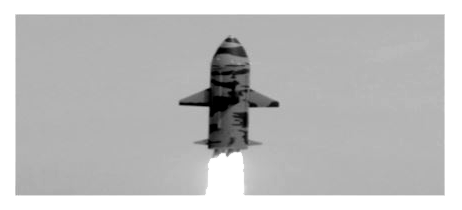A train accelerating uniformly passes three successive kilometre posts at time t=0,t=75 and t=125 (all in second), In respect of this motion, which of the following statement are true ?
The acceleration of the train is (875)m/s2
The speed at the last of the three posts is 22.67 m/s
The initial velocity of the train is 10 m/s
The train will travel the next one kilometre in 15 second
The correct Answer is:A, D
1+s=u×75+12a×(75)2
2+s=×125+12a×(125)2
Topper's Solved these Questions
- MOTION IN A STRAIGHT LINEBOOK - GRB PUBLICATIONCHAPTER - MOTION IN A STRAIGHT LINEEXERCISE - Assertion Reason
12 Videos
- MOTION IN A STRAIGHT LINEBOOK - GRB PUBLICATIONCHAPTER - MOTION IN A STRAIGHT LINEEXERCISE - Matrix -match
4 Videos
- MOTION IN A STRAIGHT LINEBOOK - GRB PUBLICATIONCHAPTER - MOTION IN A STRAIGHT LINEEXERCISE - Objective question
168 Videos
- FRICTION AND CIRCULAR MOTION BOOK - GRB PUBLICATIONCHAPTER - FRICTION AND CIRCULAR MOTION EXERCISE - Comprehension type
11 Videos
- MOTION IN TWO AND THREE DIMENSIONSBOOK - GRB PUBLICATIONCHAPTER - MOTION IN TWO AND THREE DIMENSIONSEXERCISE - All Questions
210 Videos
Similar Questions
A particle moves such that its momentum vector →p(t)=cosωtˆi+sinωtˆj where ω is a constant and t is time. Then which of the following statements is true for the velocity →v(t) and acceleration →a(t) of the particle :
View SolutionA particle moving with uniform acceleration has average velocities ν1,ν2 and ν3 over the successive intervals of time t1,t2 and t3 respectively. The value of ν1−ν2ν2−ν3 will be
View Solution
Knowledge Check
If two gases A and B and temperatures TA and TB respectively have identical Maxwellian plots, then which of the following statements is true?
ATB=TABMB=MACTAMB=TBMADGases A and B may be O2 and SO2 at 27∘C and 327∘C respectively.For all t>0,f(x)=t2−1t−1−t . Which of the following is true about f(t) ?
AIt increases in proportion to t.BIt increases in proportion to t2.CIt decreases in proportion to t.DIt remains constant .A particle moves such that its momentum vector →p(t)=cosωtˆi+sinωtˆj where ω is a constant and t is time. Then which of the following statements is true for the velocity →v(t) and acceleration →a(t) of the particle :
A→V is perpendicular to →P and →a is directed towards the originB→v and →a both are parallel to →pC→v and →a both are perpendicular to →pD→v is parallel to →p and →a is perpendicular to →p
The equation of motion of a missile are x = 3t, y = -4t, z = t, where the time ‘t’ is given in seconds, and the distance is measured in kilometres.

Based on the above answer the following:
Which of the following points lie on the path of the missile?
View SolutionA particle starts from rest, accelerates uniformly for 3 seconds and then decelerates uniformly for 3 seconds and comes to rest. Which one of the following displacement (x)-time (t) graphs represents the motion of the particle?
View SolutionA point moves with uniform acceleration and v1,v2 and v3 denote the average velocities in the three successive intervals of time t1,t2,andt3. Which of the following relations is correct
View SolutionA particle of mass m is at rest in a train moving with constant velocity with respect to ground. Now the particle is accelerated by a constant force F0 acting along the direction of motion of train for time t0. A girl in the train and a boy on the ground measure the work done by this force. Which of the following are incorrect?
View SolutionA point moves with uniform acceleration and v1,v2, and v3 denote the average velocities in the three successive intervals of time t1.t2, and t3 Which of the following Relations is correct?.
View Solution
